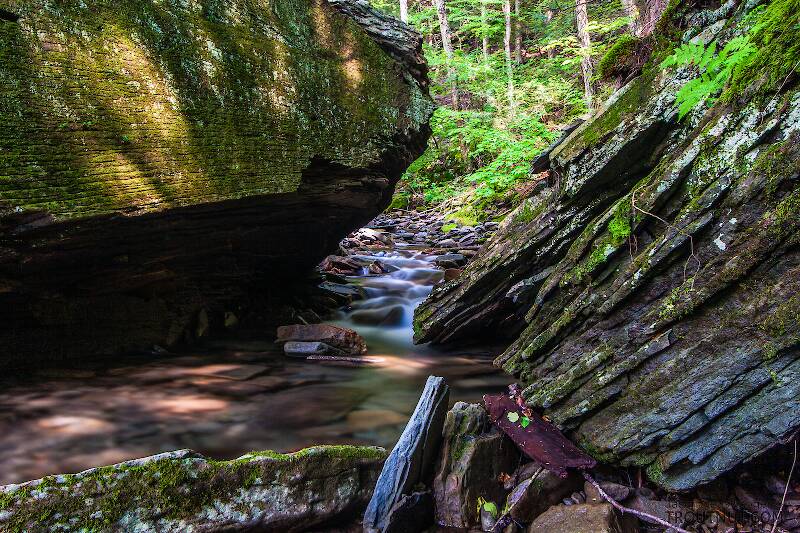
Salmonflies
Pteronarcys californica
The giant Salmonflies of the Western mountains are legendary for their proclivity to elicit consistent dry-fly action and ferocious strikes.

— 4 small yellow spots on frons visible in photos
— Narrow occipital spinule row curves forward (but doesn’t quite meet on stem of ecdysial suture, as it's supposed to in this species)
— Short spinules on anterior margin of front legs
— Short rposterior row of blunt spinules on abdominal tergae, rather than elongated spinules dorsally
I caught several of these mature nymphs in the fishless, tiny headwaters of a creek high in the Wenatchee Mountains.

Mayfly Species Parameletus croesus (Gray Drakes)
Species Range
Physical description
Most physical descriptions on Troutnut are direct or slightly edited quotes from the original scientific sources describing or updating the species, although there may be errors in copying them to this website. Such descriptions aren't always definitive, because species often turn out to be more variable than the original describers observed. In some cases, only a single specimen was described! However, they are useful starting points.
Male Spinner
Wing length: 13 mm
Head of male yellowish; ocelli black-ringed; median carina marked with black. Thorax dull brown. Mesonotum shaded with yellowish anteriorly, especially along the median line. A broad black oblique line on pleura from base of fore wing forward to the lateral margin of the prothorax. Scutella blackish, the surrounding areas shaded with pale orange. Fore legs deep brown; femur paler at apex and along the upper margin. Middle and hind legs dull olive brown with darker tarsi. Wings hyaline, venation dark. Fore wings clouded with brownish over the inner two-thirds of their length, except for the costal half of the extreme base, which is pale. Brownish shading along the costa of the hind wing.
Abdomen dull brown dorsally, with pale antero-lateral patches, triangular in shape. On the basal segments these pale areas are indistinct and semi-transparent; on the apical segments they are bright yellow and opaque, being especially prominent on tergite 10. Subdorsal dark streaks present, more or less obscure on the basal segments. Sternites yellowish. A large brown triangular patch occupies most of each sternite except the anterior margin and the antero-lateral angles. Sternite 9 brown except for a small yellow anterior triangle. Forceps base and forceps brown. Forceps base quite deeply excavated apically. Tails black-brown with darker joinings.
Female Spinner
Wing length: 13 mm
Start a Discussion of Parameletus croesus
References
- Needham, James G., Jay R. Traver, and Yin-Chi Hsu. 1935. The Biology of Mayflies. Comstock Publishing Company, Inc.
Mayfly Species Parameletus croesus (Gray Drakes)
Species Range
Common Name
Resources
- NatureServe
- Integrated Taxonomic Information System
- Global Biodiversity Information Facility
- Described by McDunnough (1923)

